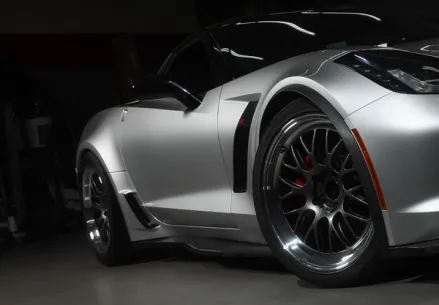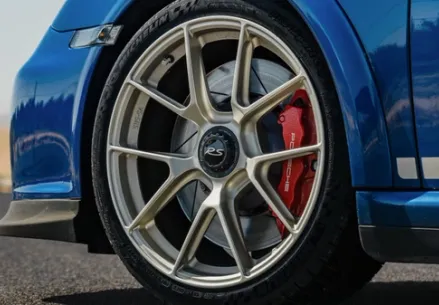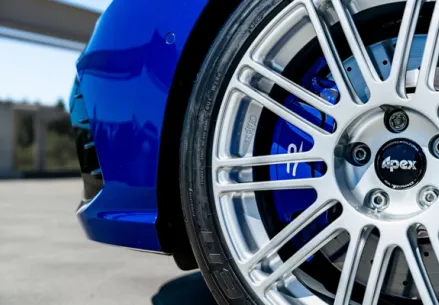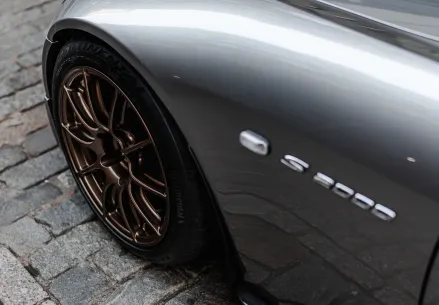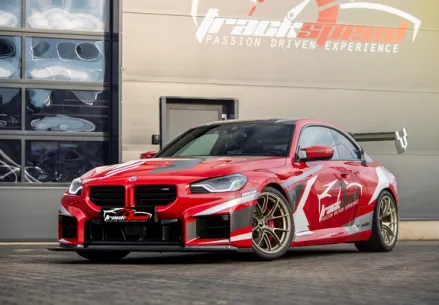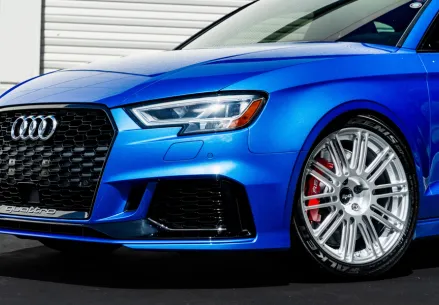
Are Your Wheels Really JWL?
Article | 08/14/2019 by Brandon Kimbell
Updated on 08/06/2024
Did you know that some wheel companies falsely claim that their wheels meet the JWL testing standard? This standard sets the guidelines for the minimum load rating a wheel should have depending on its specifications, and exactly how the stress tests need to be conducted to prove that a wheel is strong enough for passenger-car use. Those tests include cornering fatigue (bending), impact, and radial load tests. Unfortunately, JWL allows a manufacturer to conduct all these tests on its own with no third-party oversight, so there’s the potential for labeling a wheel as being JWL when they really aren’t. The info in this article will help you spot some of the red flags that could indicate the wheels you’re looking to buy may not really meet JWL standards.
Background:
In Japan, there’s an official wheel testing standard called “JWL,” which oddly enough stands for “Japan Light alloy Wheel.” It’s fair to say that JWL has become a de facto wheel-testing standard globally, as it’s used by many companies around the world despite being intended only for Japan. All wheels used on the street in Japan must meet JWL standards.
Once a manufacturer’s testing equipment is approved by the VIA (Japan Vehicle Inspection Association), the manufacturer is approved to conduct its own in-house tests following the JWL standard. If a wheel passes a properly conducted in-house test, then it may indicate the JWL logo. No third-party oversight is needed, and the honor system is used.
By using the official logo, a manufacturer is stating that it has met all the technical requirements. This is where the problems start. Over the past 12 years, we’ve seen some wheels advertised as JWL compliant when they don’t meet the standards. Below are some examples.
Skipping some required tests
A manufacturer may not test every wheel size that should be tested. To be fair, not every single specification needs to go through testing to meet JWL requirements. JWL only calls for the testing of the wheel with the highest stress load within a given width for each design. Only one wheel from each width needs to be tested, because the wheel with the highest offset and largest bolt pattern will have the highest stress.
For example, a company may test a 50mm offset wheel because it’s the highest offset being made and sold. If, a year later, that company makes a 55mm offset version of the same wheel to accommodate a new customer base, then the company is required to retest the new, higher offset. An increase in offset can have a dramatic impact on the strength of a wheel, as it adds stress. If the newest iteration of the wheel isn’t tested, there’s no way of validating its strength.
Load ratings that are too low
The other big issue we’ve seen is load ratings that don’t meet JWL requirements. Using a lower load rating while putting the JWL logo on a wheel obfuscates the reduction in wheel strength below the minimum, which in turn makes it hard for consumers to make effective comparisons when shopping.
An example we’ve come across before is as follows: JWL requires that a particular wheel specification have a load rating of at least 1,521 lb. We’ve seen a manufacturer produce that specification with a lower load rating of 1,200 lb. and claim the wheel was JWL. In the performance racing world, this reduction in load rating may be done to shave weight off a wheel. If a wheel’s weight seems too heavy on paper, a manufacturer can reduce its load rating, which will reduce its weight due to material removal. The wheel isn’t as strong anymore, but it’s lighter now, which is good for marketing. Almost no customers will notice or understand the change.
A specific example of a wheel sold today with a similar discrepancy is the 18×9.0” ET46 Porsche fitment wheel made by Titan 7 in the TS-5 design. It’s stamped with the JWL logo and the VIA logo, and it’s advertised as being both, but it’s really neither.

We bought one of Titan 7’s wheels so we could see it for ourselves and compare its brake clearances to those of our own wheels. That’s when we noticed the serious discrepancy. The JWL requirement for 18” wheels with a 5×130 bolt pattern is a load rating of 735 kg (1,620 lb.). The Titan 7 wheel is marked as being rated to only 690 kg (1,521 lb.). That’s approximately 100 lb. less per corner, or 400 lb. less per car, than the minimum JWL required load rating. If that wheel has been fully weight-optimized to the 690 kg load rating as alluded to in their marketing, then reengineering and adding extra material (and thus weight) is almost certainly required to avoid cracking during the dynamic cornering fatigue test (bending test).

Since it’s become so easy to outsource work to overseas suppliers, a growing number of novice companies rely heavily on their suppliers for crucial engineering and testing decisions. Even if a company wanted to be fully compliant, many of them often aren’t even aware of what the standards are, so they’re not knowledgeable or experienced enough to keep their overseas suppliers in check.
In a competitive marketplace, there’s motivation for new companies to take shortcuts to look legitimate and reputable. This is where third-party validation becomes so important to keep manufacturers honest and in check. We wrote a whole article about VIA testing that covers how many companies are also advertising their wheels as being independently tested and registered with the VIA when they aren’t. Combine that with the JWL issues we covered here, and there’s a lot to be concerned about.
Tags
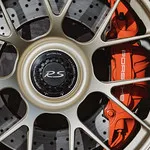 Brandon Kimbell
Brandon KimbellBrandon is a Porsche Fitment Expert at APEX Wheels. Prior to joining APEX in 2022, he worked as Office Manager for a Porsche & Ferrari service and race shop, guiding customers in all areas – suspension, power, aesthetics, you-name-it. His first foray into racing came In college when he was asked to assist at a PCA club race. Says Brandon, “I figured if I am already making the drive, I might as well enter the HPDE happening at the same time.” He hasn't stopped since. Among the various cars he has owned and/or tracked are a ‘74 Corvette Convertible, ’74 Firebird Formula 400, ‘17 GTI, ‘07 Cayman S, and his current ride, a ‘12 Cayman R (BGB X51 pack 3.8L) with staggered APEX EC-7RS 18x9”ET46 & 18x10” ET36 in Motorsport Gold. Fun Fact: Brandon is a big fan of SIM racing, which he uses to learn about a new track he’s going to or get a refresher on a familiar track, as well as improve his racecraft.Have questions about wheels for your Porsche? Use our contact form and ask for Brandon.
If you like cheap gear you will hate this newsletter.
